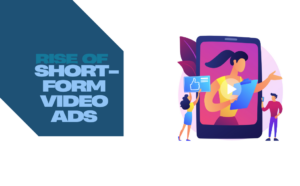Table of Contents
Toggle
7 In-Demand Cross-Platform App Development Frameworks To Use Now – Cross-platform app development is a fast-growing method preferred by many engineers and app owners today. It comes as no surprise, as it brings a slew of benefits including monetary and time benefits.
You can either create separate native applications for separate platforms or create a single solution that works for all platforms. For brands working with a restricted timeline and budget, a cross-platform application is undoubtedly the most feasible option to reap the benefits of a mobile solution.
Back in the day, cross-platform applications were seen as a step down in terms of performance, as native apps scored better. However, with the latest available technologies, performance is no longer a concern for cross-platform solutions. Experts in mobile app development services recommend highly efficient cross-platform frameworks to create top-notch mobile apps.
Here is a list of 7 of the most in-demand cross-platform app development frameworks that you can use too.
Flutter
Flutter is perhaps one of the most recommended cross-platform frameworks today. And for good reason. It is an impressively potent, free, and open-source technology introduced by Google that allows you to use a single array of code for all platforms. It uses the unique Dart programming language as opposed to others that use JavaScript. It also comes with a special “hot reload” feature that allows you to make changes and modify the code to see results in real-time, without having to re-load the entire application.
Owing to its cost-effectiveness and efficiency, mobile app development service experts deem Flutter as the perfect choice for the development of an MVP (Minimal Viable Product). In addition, it comes with its own graphics engine, which eliminates the need for engineers to create separate interfaces for Android and iOS. Interestingly, Flutter is also the primary means to create apps for Google Fuchsia OS.
Ionic
Ionic is another popular open-source cross-platform framework based on AngularJS and Apache Cordova. It lets developers use a mix of some of the most popular programming languages such as HTML5, JavaScript, and CSS to access native platform controllers. In effect, it implies that mobile solutions created using Ionic are essentially hybrid HTML applications. What’s interesting is that they run within special shells on mobile devices; UI WebView on iOS devices, and WebView on Android. Some other notable advantages of Ionic include access to a variety of ready-made UI components, ample plugins to access native features of mobile devices, and the ability to build creative user interfaces.
React Native
React Native is one of the most preferred frameworks by mobile app development service professionals, owing to its remarkable features and benefits. Built on JavaScript, it is known to produce impeccably high-performing applications with a near-native feel and experience, for both iOS and Android. Integrating the benefits of both JavaScript and React.JS, the framework allows engineers to write code in Objective-C, Swift, or other Java languages. It also comes with a great native library with which you can perform resource-intensive tasks like image editing, video processing, and others that are typically not a part of the APIs of frameworks. As an extra advantage, React Native is a framework that is highly compatible with third-party plugins as well.
Xamarin
Xamarin is another free and open-source cross-platform app development framework that is currently owned by Microsoft. Unlike most other cross-platform frameworks, this one is based on the open-source implementation of the .NET platform called Mono. It comes with its own set of resources including .NET libraries, C# complier, runtime, etc. It was intended to help run solutions coded in C#, on all OS’s including Unix, Mac OS, and Windows. It allows engineers to reuse almost 90% of the code for the three different platforms. Plus, it is sufficiently compatible with hardware-specific features through plugins and APIs.
PhoneGap
PhoneGap is an impressive cross-platform app development framework developed by Nitobi Software, later acquired by Adobe. Based on JavaScript, HTML5, and CSS3, it is perhaps one of the most easy-to-use tools for mobile app development service professionals. It comes with a powerful backend that helps accelerate the development process, making it more efficient. Developers use it for building simple applications that do not extensively rely on native device capabilities. However, it does offer sufficient compatibility with features like GPS, and camera. Interestingly, it supports a range of platforms in addition to iOS, and Android, such as Windows, Blackberry, and Bada.
NativeScript
NativeScript is easily one of the top choices for developers owing to its impressive WORA (Write Once, Run Anywhere) capability. It is an excellent cross-platform framework based on JavaScript, that is known to render attractive, functional, and platform-native interfaces, without WebViews. Unlike React Native, NativeScript comes packed with plugins for all types of mobile solutions, which practically does away with the need to use third-party integrations to use features like the Camera. It is compatible with any language that can be transpiled into JavaScript, such as TypeScript, but it also supports Angular.JS and Vue.JS. Additionally, it supports all components of segments like CocoaPods and AndroidArsenal.
Node.JS
Last but not least, Node.JS is yet another exceptionally well-created cross-platform app development framework based on V8 – the JavaScript engine. It is essentially a JavaScript runtime framework that transforms JavaScript from a high-level programming language into a generally acceptable language. It is an open-source technology that provides server-side runtime, enabling the development of server-side apps and networking applications.
By nature, solutions developed using Node.JS are responsive and efficient. It also comes loaded with a rich library of JavaScript modules, making the process of app development much simpler. What is most impressive about Node.JS is that its V8 engine, compiles and runs JavaScript code at lightning speed, as it directly converts it into machine code, rather than interpreting it as bytecode.
Final thoughts
These special cross-platform app development frameworks were invented by creative engineers with the sole intention of making the process of mobile app development quicker, more efficient, and more compatible with platforms of all kinds. Each of these technologies comes with its own merits and demerits, which makes them suitable for certain challenges and problems. According to the type of solution you are going for, and the kind of problem you are trying to solve with your application, you can choose one of these frameworks and start your mobile application journey.
DM360 offers a full-blown development team with subject matter experts in each of these frameworks. With years of experience, our mobile app development service experts can guide you and help you choose the best framework for your project.
If you have an app idea in mind, get in touch with our cross-platform development team today. Let’s make it a winner!






